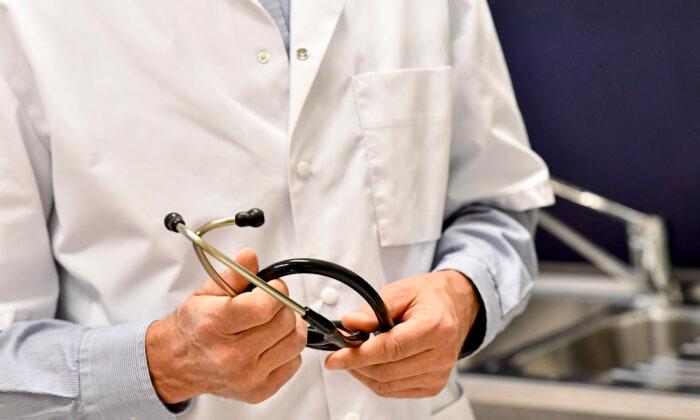Mississippi has become the third state to pass legislation to allow potentially lifesaving care to the terminally ill and allow these patients access to individualized treatments that bypass federal government red tape.
Mississippi Gov. Tate Reeves signed the “Lifesaving Treatment Act” this week, and there was unanimous bipartisan support for the bill in both chambers of the state Legislature. It will remove government barriers for patients suffering from rare and life-threatening diseases and allow them to work with their doctors for treatments for their own specialized care.
Arizona and Nevada have already enacted the Right to Try for Individualized Treatments, also referred to as Right to Try 2.0, which were created and championed by the Goldwater Institute.
“We can’t let red tape stop children from getting lifesaving care. Other countries are using individualized treatments to offer hope to patients with cancer and rare diseases,” Republican Mississippi state Sen. Josh Harkins said in prepared remarks recently.
In Maryland, similar legislation has passed both chambers unanimously and has now been sent to the governor’s office for consideration.
California and Iowa state lawmakers introduced legislation in their current sessions.
In an email to The Epoch Times, Goldwater Institute Senior Fellow Naomi Lopez said “we expect that they will be revisited next session.”
Ms. Lopez said another state may be introducing the bill in the next week or so, and the Goldwater Institute expects “numerous states to introduce legislation in the 2025 legislative session.”
Individualized Gene Therapy
Despite the initial Right to Try legislation that was passed in 41 states and signed into federal law by President Donald Trump, Right to Try 2.0 “creates a treatment pathway for rare- and ultra-rare disease patients who might benefit from individualized treatments that are not currently (and may never be) available through the clinical trial process,” Ms. Lopez explained.“Right to Try 2.0 creates a needed pathway to ensure that, if and when possible, patients can seek individualized treatments without first having to beg the federal government for permission,” Ms. Lopez said. “When a patient, under a doctor’s care, might benefit from an individualized treatment, they are not forced to seek treatment in other countries or forgo additional treatment altogether.”
According to the Goldwater Institute, nearly 80 percent of rare diseases are estimated to be genetic. For many patients, individualized gene therapy may be a promising option, and with new advances in modern medicine, researchers can use a patient’s own genetics to tailor a treatment to that individual.
No one would know better about the urgent need for access to cutting edge medical advances than Kendra Riley of Arizona, whose two daughters, Olivia and Keira, were diagnosed with a rare and aggressive brain disorder, metachromatic leukodystrophy (MLD).
While it was too late to help Olivia, who is now in hospice at almost 6 years old, the Riley family had to move to Italy for a personalized gene treatment for Keira, who is now showing zero symptoms of the disease.
“While our tragedy was turned into a bittersweet triumph, with Livvy leaving us all too soon and Keira essentially cured, there is not much normalcy in our everyday life (through we try to make things as ‘normal’ as possible for all three girls),” Mrs. Riley told The Epoch Times via email.
Hope for Patients and Families
Mrs. Riley said Right to Try 2.0 offers patients hope and could save lives.“It offers patients with rare diseases a glimmer of hope in an otherwise very dire world. Right to Try 2.0 allows them access to potentially life-saving (or disease stalling) treatments that would otherwise not be available in the U.S. due to FDA red tape,” Mrs. Riley said.
If Right to Try 2.0 was available in Arizona at the time of Keira’s diagnosis, and a doctor and hospital were available to perform the treatment, Mrs. Riley and her family would not have had to move to Italy for her life-saving therapy.
Another mother, Hannah Lowe, is also a proponent of Right to Try 2.0. Her 4-year-old son, Austin, suffers from a rare and fatal form of childhood muscular dystrophy. Ms. Lowe testified before the Maryland Legislature to push for the bill’s passage.
“Under the current regulatory framework, the process for getting new treatments into patients is long, and this is time that we do not have,” Ms. Lowe testified. “We are not asking for a handout. We are asking for laws … that would allow medical treatments to be developed faster with appropriate safety and efficacy measures, and under physician care and guidance for people for whom there are no treatments and no cures.”
The Goldwater Institute and the Right to Try website feature dozens of personal stories illustrating the need for Right to Try 2.0 and those who have benefited from the initial Right to Try legislation.
For the Riley family, Right to Try 2.0 means hope for other families.
“With the recent FDA approval of the gene therapy Keira received, combined with Right to Try 2.0, there is now even more hope for families like ours,” Mrs. Riley said. “The last piece of the puzzle will be adding MLD (Metachromatic Leukodystrophy) to the RUSP (Recommended Uniform Screening Panel) so that states can implement newborn screening and catch this disease before symptoms begin and it’s too late, like it was for our daughter Livvy.”







